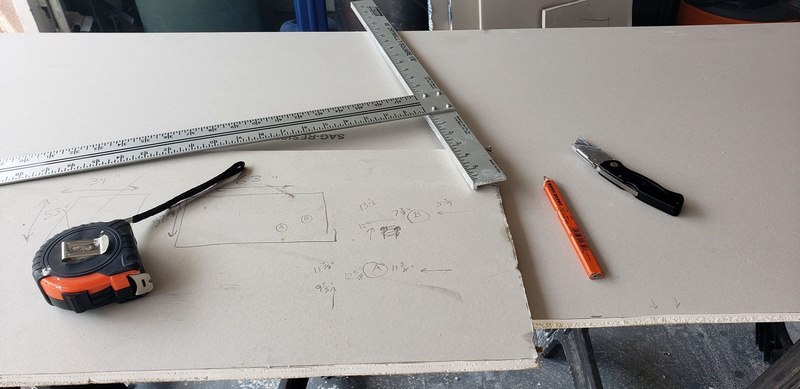The Pythagorean theorem is the basis for the 3-4-5 rule. This simple math equation is a carpenter’s tool used to find or verify the squareness of a room or object.
No, it’s not necessary to be a math major to use this rule. Like the homemade water level, sometimes the simplest tools are the best and most accurate. Best of all, no batteries or extension cords are needed!

When is the rule used? Any time an object needs to be square; that is, the distance between diagonal corners is the same, or a precise 90-degree angle needs to be established. Consider a door and a door frame or jamb. If either is out of square, the door won’t open or close properly.
It’s also used to lay out deck post holes.
If a room is out of square, the floor tiles will not have equal borders on at least one wall. If the finish floor is hardwood or a laminate floor, the border run of planks will have to be ripped at an angle. If the batter boards set up to pour a concrete form aren’t square, nothing in the forthcoming home is going to be just right.
Read Also:
The concept is pretty simple and readily recalled from Euclidean geometry 101. ‘A’ squared plus ‘B’ squared equals ‘C’ squared, where A = 3, B = 4, and C = 5. And the beauty of it is that it doesn’t matter if units are measured in inches, feet, miles, meters, or cubits.
To use the rule on a floor to strike control lines, first, measure from one wall in two places and snap a chalk line through them. This line will be parallel to the wall. Mark a spot on the line and another 3 units away. Now sweep a short arc 4 units away and parallel to the first mark.
Finally, sweep an arc 5 units from the second mark at approximately a 45-degree angle to the chalk line. The point where the second arc intersects the first arc is the magic point. Strike a chalk line through the magic point and the first mark and viola! A perfect 90-degree angle!
The two chalk lines are the control lines and with proper measuring can be transferred anywhere else in the room.
As stated above, the rule is based on the Pythagorean theorem. It shouldn’t actually be called a theorem since it’s gone through many mathematical proofs.
Pythagoras was a Greek mathematician and philosopher. He started the Pythagorean School of Mathematics in Cortona, which was a Greek seaport located in Southern Italy.
Although it’s common knowledge that Pythagoras set the rule forth in the manner that it’s now taught, it is believed that the ancient Babylonians used it long before he was born.